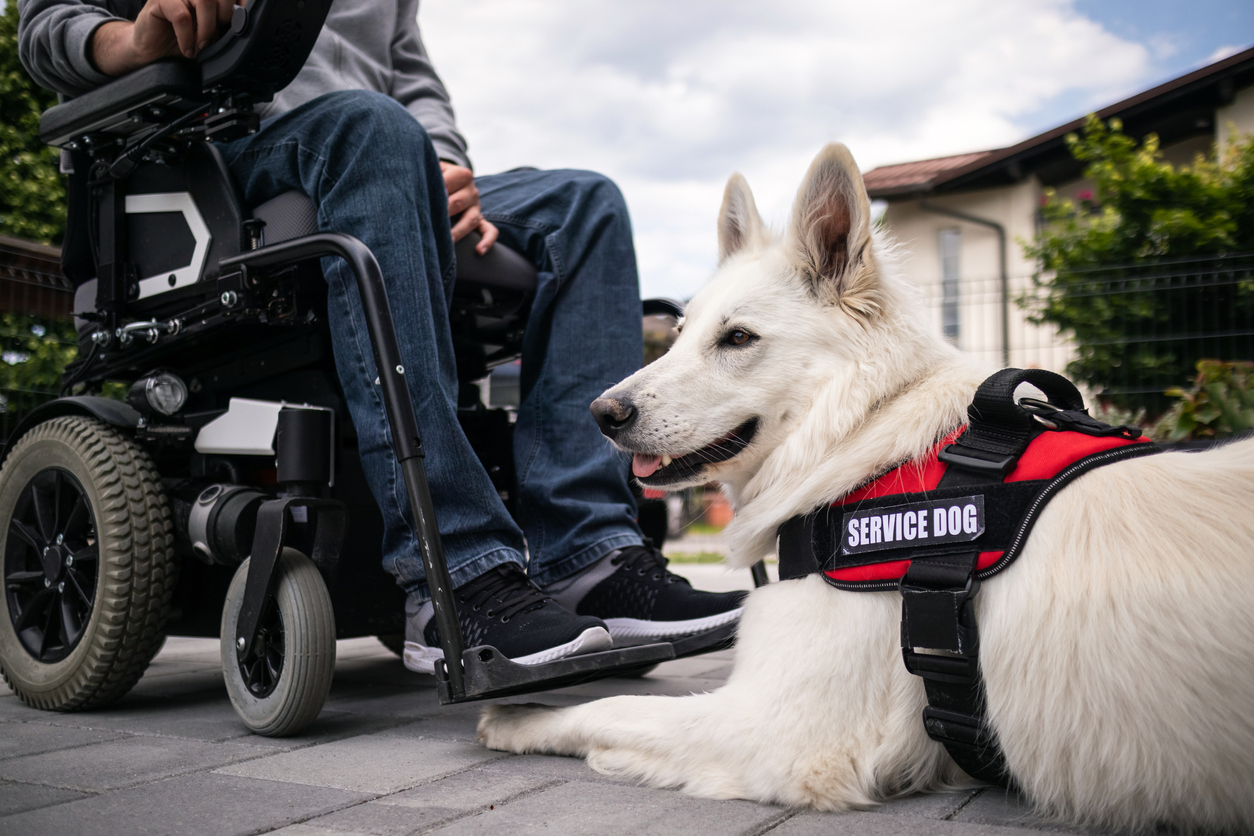Living with Chronic Pain
Service Dogs for Those With Chronic Pain

What are service dogs?
Service dogs are trained to perform at least one task that helps to mitigate the disability of their handler. They may be beneficial for improving functionality for individuals who struggle with chronic pain. Emotional support is not considered a task under the Americans with Disabilities Act (ADA); however, a psychiatric service dog can help with various psychiatric conditions.
Service dog tasks
There are numerous tasks that a service dog might perform to help with activities that are diminished due to chronic pain. These tasks include, but are not limited to, the following:
- Bracing for those with strength or balance issues
- Counterbalance to prevent falls
- Retrieval for those who have difficulty standing, bending, reaching, etc.
- Pushing buttons, such as on automatic doors
- Momentum pulling for wheelchairs
- Opening doors, drawers, etc.
- Support with walking, standing, or climbing stairs
- Carrying objects, including bags, small objects, etc.
- Medication reminders and retrieval
- Finding help if the handler falls or becomes unresponsive
- Sighted guide for those who experience confusion or are overwhelmed with conditions such as migraines or pain flares
Training of service dogs
Service dogs do not have to be trained by an organization and may be trained by the handler. There are pros and cons to both, including price, involvement, and time commitment. An organization-trained dog may be more expensive, but the handler will receive their dog already trained. The handler can train the dog for less money, but it requires a great deal of time and effort. It does allow the handler to bond with their dog early on in their life.
Things to consider
The most important point to consider when getting a service dog is the needs of the handler. Other considerations include the following:
- Health and genetic history of the dog. If the service dog is obtained from a breeder, ensure it is an ethical breeder that knows the dog’s genetic history and if it has healthy bloodlines.
- Research the predisposition to certain disorders. Certain breeds have higher rates of health issues, such as cancer, heart disease, hip or bone problems, etc.
- Weight and height will be a deciding factor if a dog is used for support, balance, pushing buttons, counterbalance, momentum pulling, etc.
- A service dog should generally have enough energy to perform their work, but also be content to relax if the handler is having a bad pain day.
- Aggressive dogs cannot be service dogs; however, dogs that are too friendly may easily approach strangers or seek other pets to socialize with. An even temperament is needed in a service dog.
Breeds of service animals
Any breed of dog can be a service dog, although some are more suited for certain types of work than others. The most common breeds of service dogs include the following:
- Labrador retrievers
- Golden retrievers
- German shepherds
- Poodles
Training and size of the dog
Service dogs that perform heavy mobility tasks, such as brace and mobility support, require specialized training. In addition to being in good health, brace dogs should be at least 23 inches tall and weigh 55 pounds or more. A taller or heavier person will need a larger dog, potentially 30 inches or greater and over 100 pounds. A dog who does momentum-pulling with wheelchairs must be at least 65 to 79 pounds, depending on the weight of the individual they are pulling.
A dog that performs brace work should have their withers within six to eight inches while standing. Breeds that are good candidates for this type of work include the following:
- Standard poodles
- Bernese mountain dogs
- Molosser breeds, such as great Danes or mastiffs
- Doberman pinschers
- “Bully breeds”
- German Shepherds
- Rottweilers
- Labrador retrievers
- Golden retrievers
- Newfoundlands
Certifications
A service dog is not required to have certification, registration (other than if a license is required to own a dog), or paperwork, except for a letter from a medical professional due to housing or flying. They are also not required to wear a vest identifying them as a service dog. State and local governments can require that a dog be licensed and vaccinated, but a registry is voluntary and does not impact where a person can or cannot take their service dog. Scams to avoid include websites offering “certificates” for a service dog or “registries” where a person can enter their dog’s information.
Additional sources: ADA.gov, American Kennel Club, ADA.gov, Canine Partners for Life, American Kennel Club, and Anything Pawsable

















